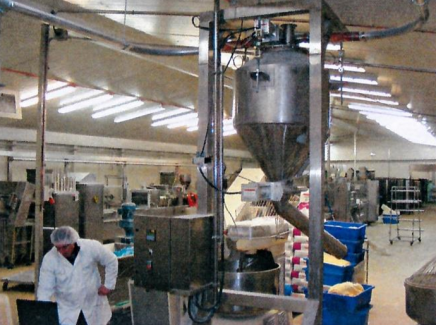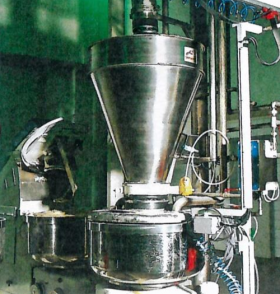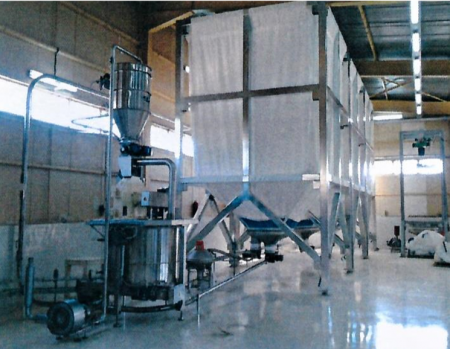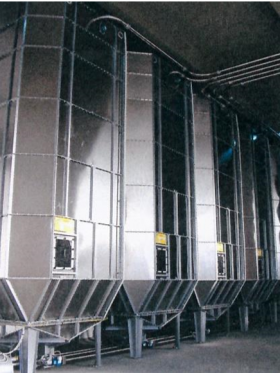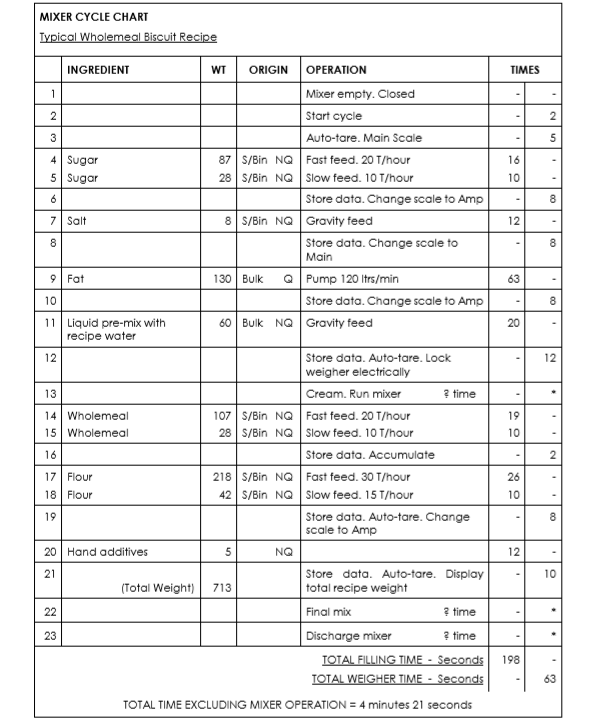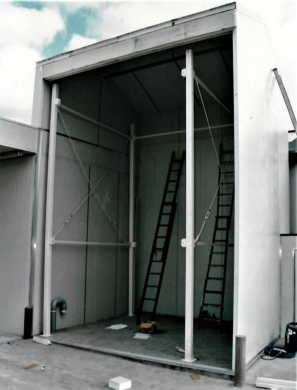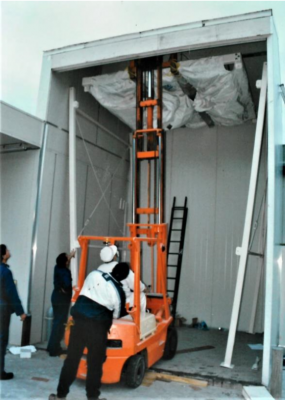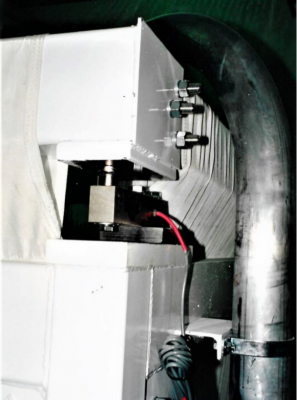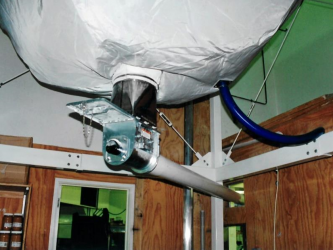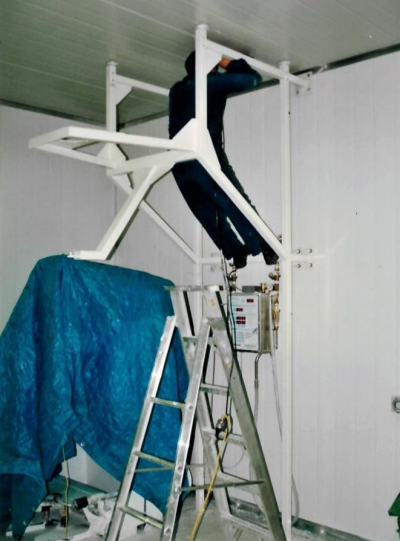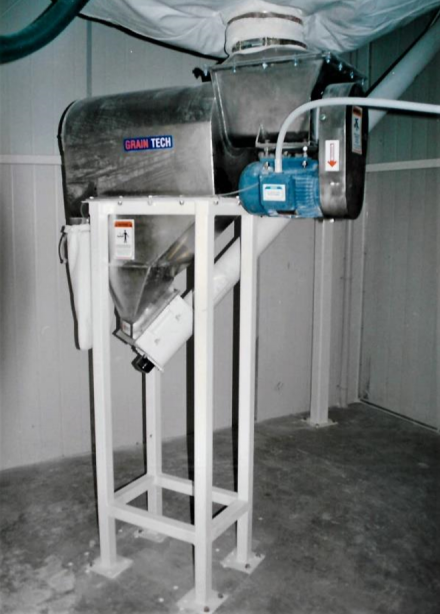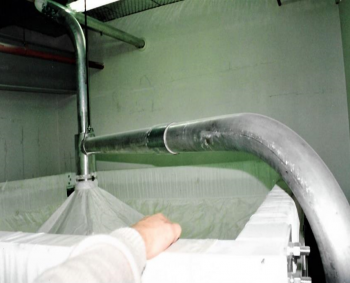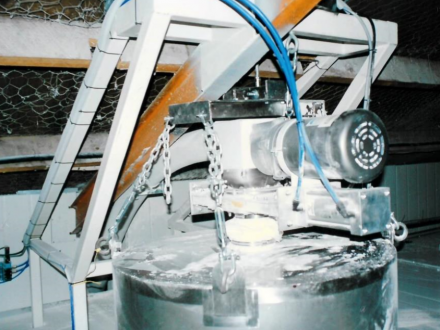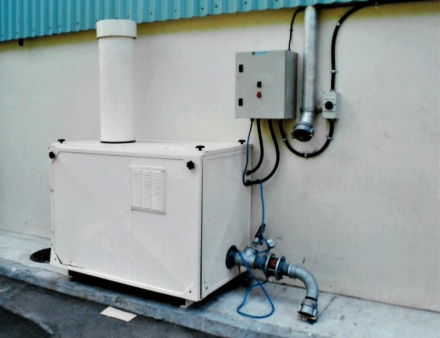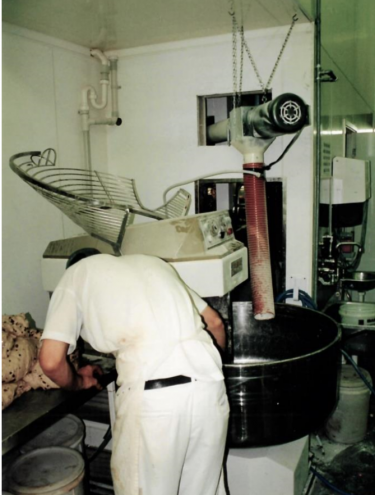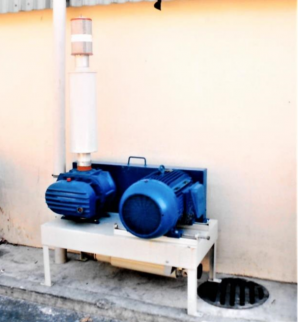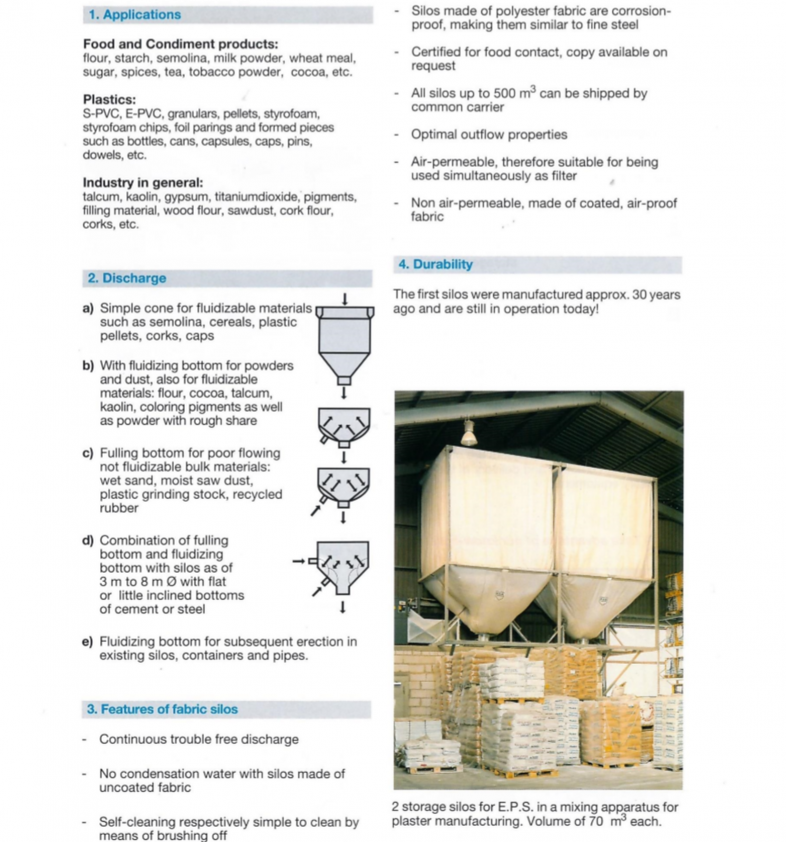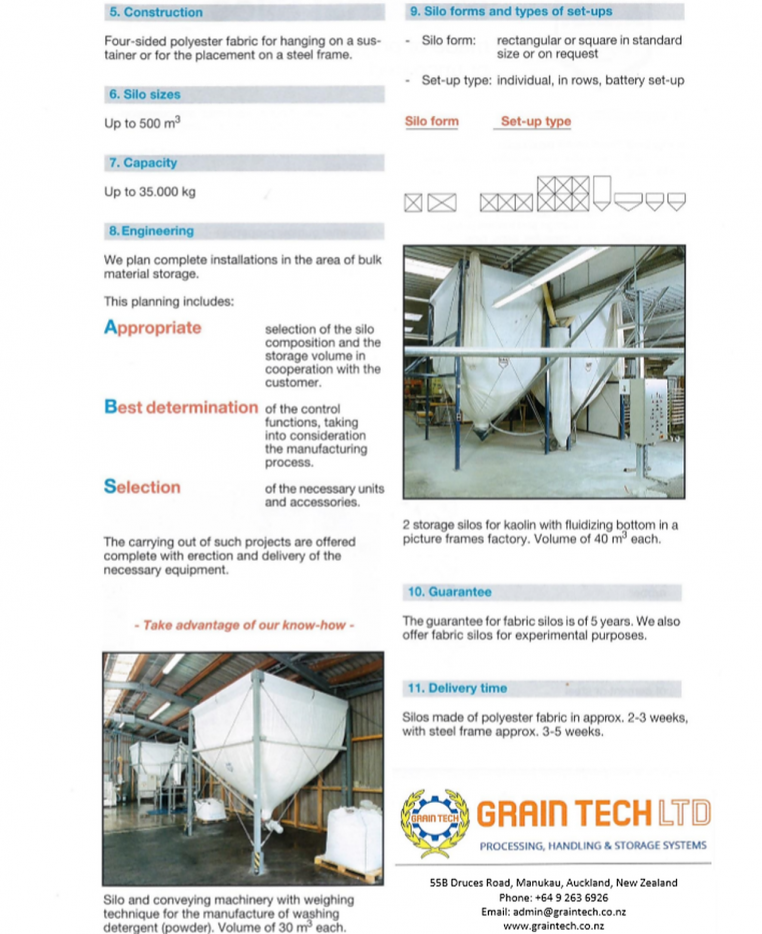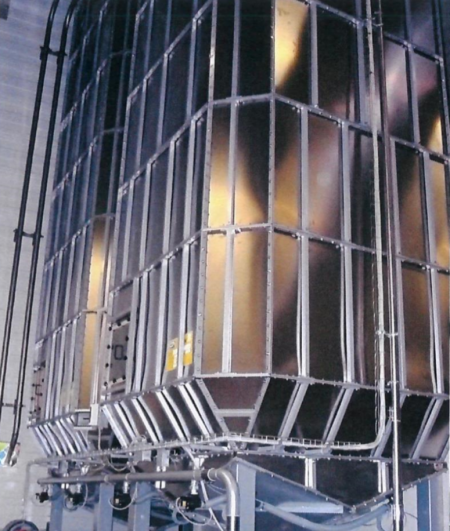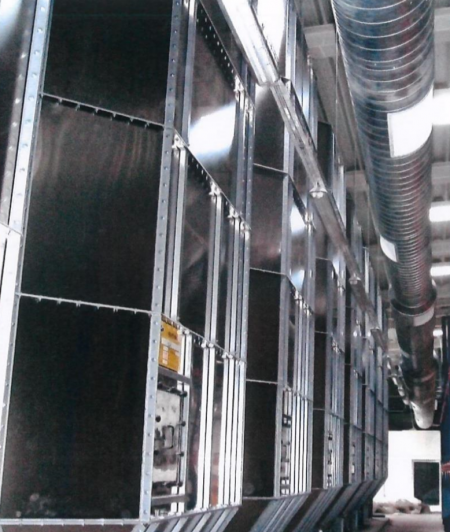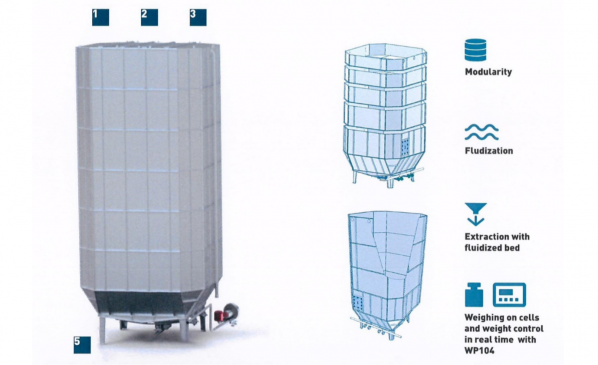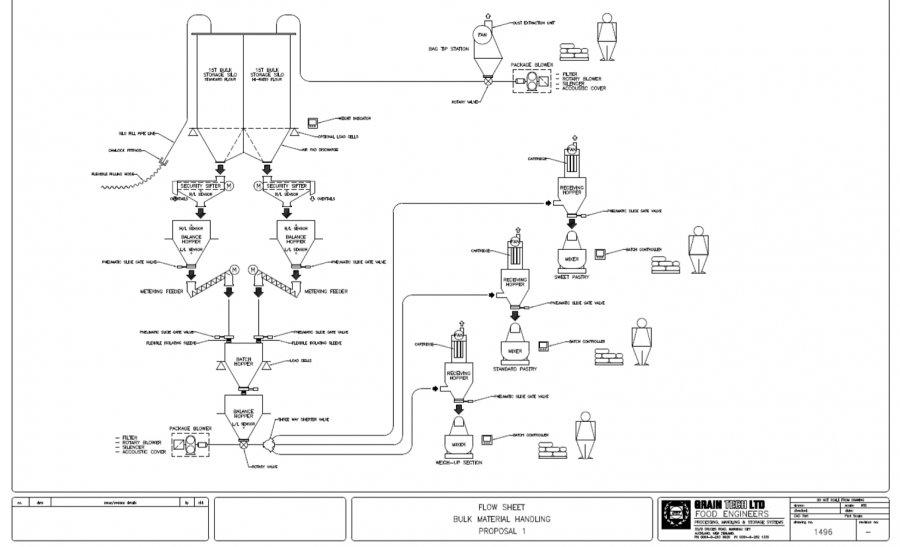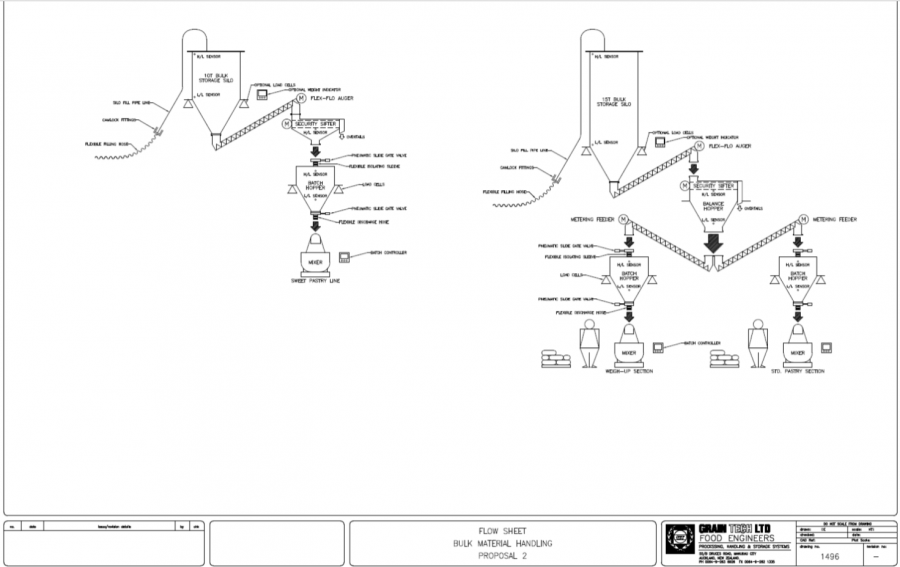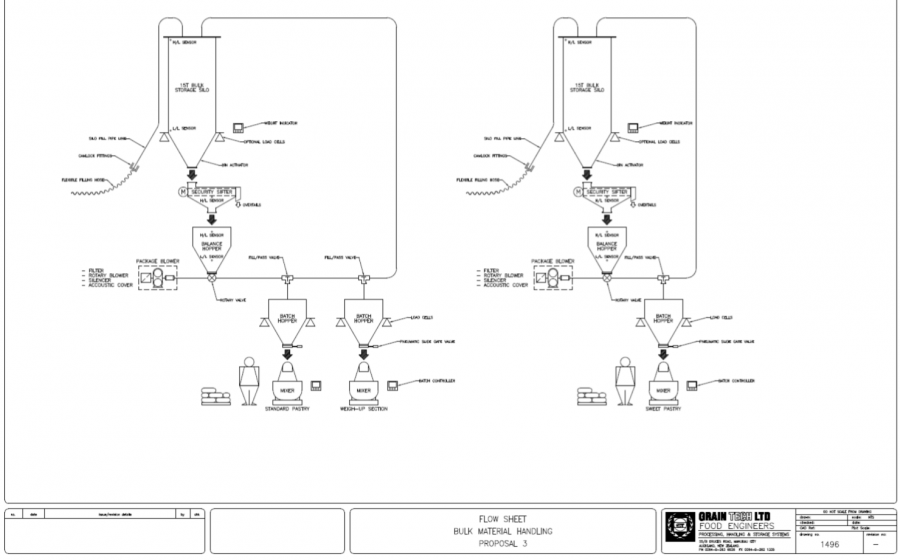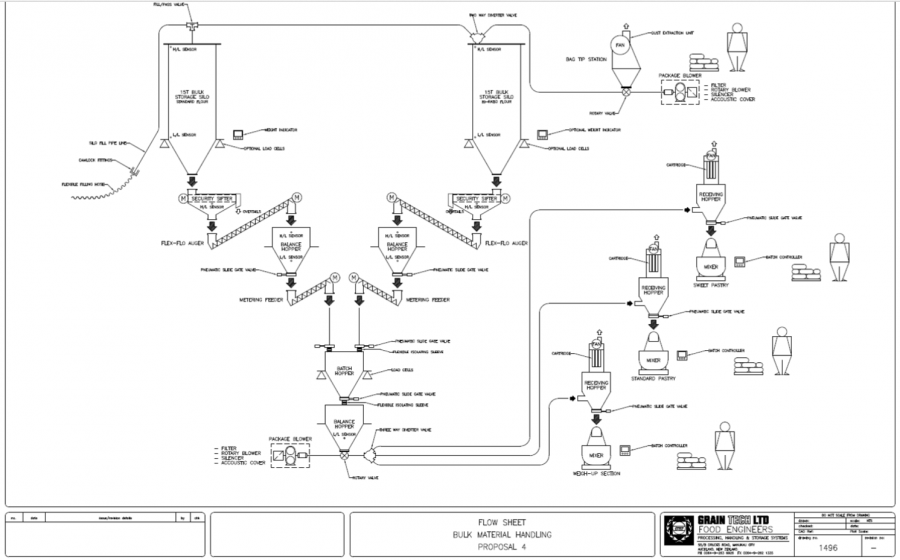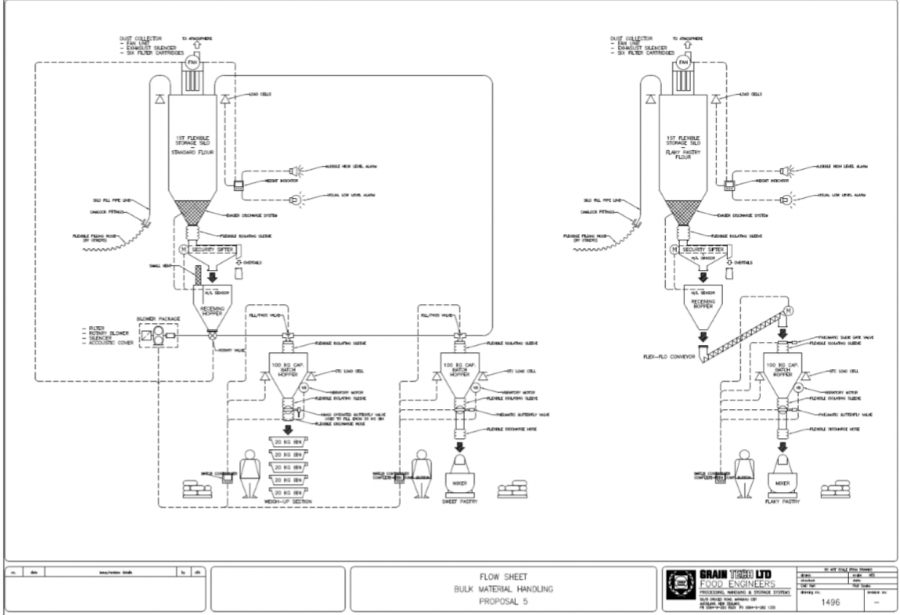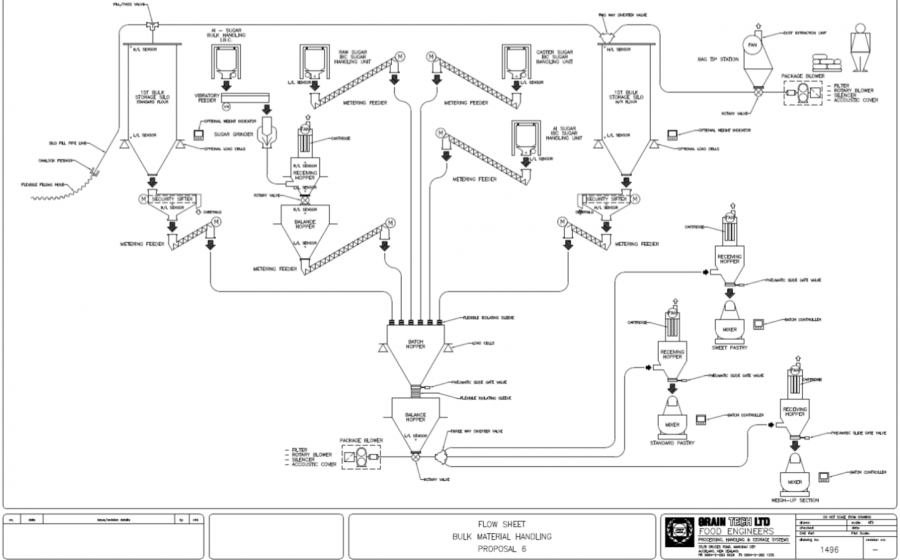Our Weigh-Mix and Bulk Ingredient Storage Systems
|
2.1 FACTORS INFLUENCING THE INTRODUCTION OF ”WEIGH-MIX”(a) The major factor is undoubtedly the design of a low profile platform assembly coupled to a load cell weighing system which ignores the weight of the mixer and is capable of accurately weighing all the ingredients in a recipe possibly ranging from 0.5 kg up to 1000 kg. (b) The largest ingredient in any recipe is flour and in the past it was considered necessary to blend a variety of flours accurately by weight in order to achieve the correct qualities for a particular recipe. This philosophy now appears to have considerably less importance and users generally have fewer suppliers of flour, the quality of which is established before delivery. In addition, in large operations, the equipment for the storage and discharge of flour has improved to the extent that to discharge several silos simultaneously and blend flours by volume is now a practical proposition. (c) Load cell mounted weigh stations complete with the mixer positioned on the platform assembly, have proven to be extremely reliable and accurate over many years in operation and under normal operating conditions require practically no maintenance. (d) Suppliers of high speed dough mixers are well aware of the need for accurate recipe formulation into their machines and their designs incorporate the necessary new feeding and weighing techniques the new Weigh-mix concept offers.
(b) The Weigh-mix unit is compatible with current bakery thinking and suits the broader issues of the “modular” production line. (c) The high levels necessary to accommodate sieving machines, blending bins, central weighers and the associated distribution, is not needed providing considerable cost savings. (d) High buildings to house and support service bins above mixers can be eliminated, again saving costs. (e) When considering automatic handling of dry ingredients in a ground floor mixing room, it is usually found to be impossible to introduce weighing equipment above the mixers because of the height restrictions. By using the low profile Weigh-mix (250mm high) and a simple re-lift conveyor from a floor mounted service bin, the problem can be resolved. (f) Considerable initial savings can be made by the elimination of a large central control panel with its associated manual back-up facilities. (g) Second generation handling plants have, in some instances, included audit check weighing facilities for dry and liquid ingredients. The new Weigh-mix eliminates the need for such extra sophistication. (h) The Weigh-mix System can be supplied with either: (i) The Weigh-mix is important when the need is to dispense ingredients accurately, the weight of which may vary considerably from recipe to recipe. (j) The system will monitor continuously and totalise by weight all the ingredients in a recipe. (k) The control panel for a modern central weighing system in a new factory presents numerous problems of function, design and manufacture, the solving of which takes time. Because of the nature of the central system, the functions of the panel are usually the last to be determined. It is considered that the Weigh-mix concept, by virtue of its ease of modular application, will enable critical control decisions to be made earlier in the project study with consequent cost savings. (l) The re-modelling of an existing handling plant is a difficult and expensive operation and involves consideration of: ii. Increased accuracy and consistency of recipe ingredients into the mixer iii. Data collection and recording of all ingredient usage iv. Minimum interruption of production v. The handling and control of ingredients of intermediate and minor weight vi. Alternate methods of dough mixing, e.g. batch or continuous. |
ABS bulk storage silo installation procedure
|
|
|
|
|
|
|
|
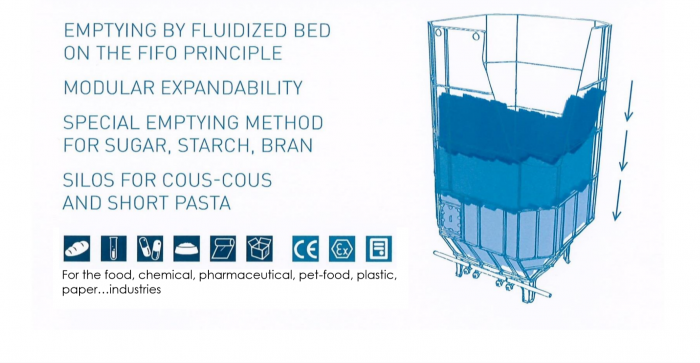
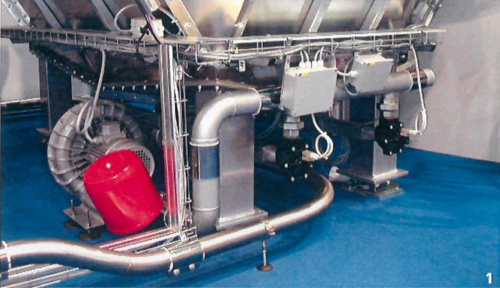
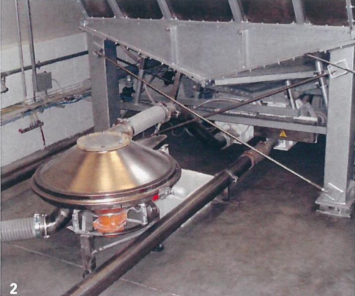
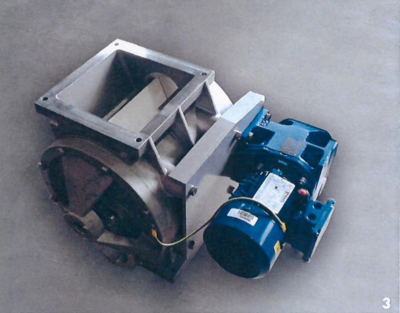
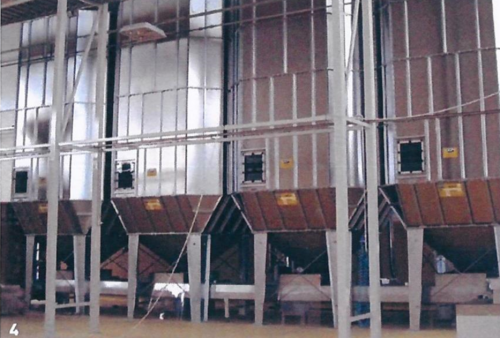
|


